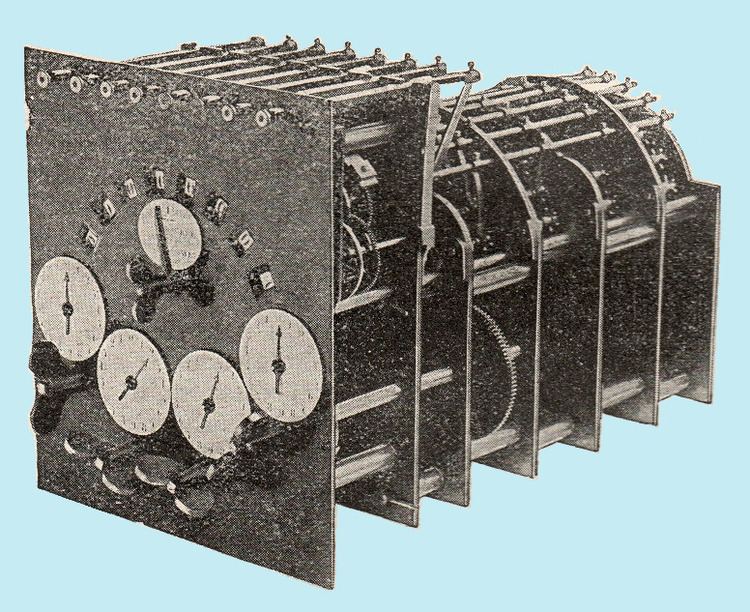 | ||
First patented in France by Timoleon Maurel, in 1842, the Arithmaurel was a mechanical calculator that had a very intuitive user interface, especially for multiplying and dividing numbers because the result was displayed as soon as the operands were entered. It received a gold medal at the French national show in Paris in 1849. Unfortunately its complexity and the fragility of its design prevented it from being manufactured.
Contents
Its name came from the concatenation of Arithmometer, the machine that inspired its design and of Maurel, the name of its inventor. The heart of the machine uses one Leibniz stepped cylinder driven by a set of differential gears.
History
Timoleon Maurel patented an early version of his machine in 1842, he then improved its design with the help of Jean Jayet and patented it in 1846. This is the design that won a gold medal at the Exposition nationale de Paris in 1849.
Winnerl, a French clockmaker, was asked to manufacture the device in 1850, but only thirty machines were built because the machine was too complex for the manufacturing capabilities of the time. During the first four years, Winnerl was not able to build any of the 8 digit machines (a minimum for any professional usage) that had been ordered while Thomas de Colmar delivered, during the same period, two hundred 10 digit Arithmometers and fifty 16 digit ones.
It is to be noted that none of the machines that were built and none of the machines described in the patents could be used at full capacity because the capacity of the result display register was equal to the capacity of the operand register (for a multiplication, the capacity of the result register should be equal to the capacity of the operand register augmented by the capacity of the operator register).
Description
Following is a description of one of the two machines introduced in the 1846 patent. It has a capacity of five digits for the operator and ten digits for the operand and the result registers.
All the registers are located on the front panel, the reset mechanism is on the side.
